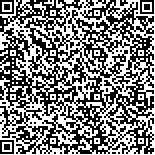下载中心
优秀审稿专家
优秀论文
相关链接
摘要

大气痕量气体差分吸收光谱仪EMI( Environmental trace gases Monitoring Instrument)是搭载在“高分五号”(GF-5)卫星上的覆盖紫外—可见光波段的光谱仪,用于测量240—710 nm波长范围内的地球后向散射和太阳辐射,旨在量化全球对流层和平流层痕量气体的分布,如臭氧、二氧化氮等。本文关注EMI载荷对大气弱痕量气体甲醛(HCHO)的探测能力,并基于实测数据初步评估EMI HCHO产品的探测能力与精度。研究结果表明EMI的辐照度波长校准精度高,但在不同行之间存在较大的不均匀性,其波长校正的精度与仪器的狭缝函数高度依赖行位置的变化。基于EMI的HCHO反演的结果表明,EMI UV2频段的标称信噪比较低,使得利用差分吸收光谱技术(DOAS)得到的HCHO斜柱浓度SCD(Slant Column Density)存在较大的随机误差和拟合残差。现阶段,评估得到的EMI HCHO斜柱浓度的不确定性为1.2×1016 molec./cm2。与国际同类载荷TROPOMI(TROPospheric Ozone Monitoring Instrument)、OMI(Ozone Monitoring Instrument)的交叉对比验证结果表明,EMI可以捕捉到中国地区夏季HCHO的空间分布特征。EMI & TROPOMI与EMI & OMI的相关系数均大于0.8。但是在华东地区EMI HCHO普遍高于OMI和TROPOMI,其原因需要进一步研究。本文的研究证明了EMI对夏季HCHO的探测潜力及不足,可为后续类似载荷的指标设计和算法研发提供参考。
Onboard the Chinese GF-5 satellite, Environmental trace gas Monitoring Instrument (EMI) is a nadir-viewing wide-field spectrometer that measures solar back-scattered earthshine radiances in the ultraviolet and visible spectra range. It was launched on 9 May 2018, and aims to quantify the global distribution of tropospheric and stratospheric trace gases. Meanwhile, formaldehyde (HCHO) is an intermediate oxidation reaction of various Volatile Organic Compounds (VOC) in the atmosphere, which is important for the formation of tropospheric ozone and secondary organic aerosols. Previous studies have proven that HCHO can be used as a tracer for VOCs in the absence of other VOC observations. Therefore, the monitoring of HCHO is essential for air quality. The spectral range of EMI covers HCHO absorption signature at 320—360 nm, with the potential for HCHO detection.We have evaluated the requirements and feasibility for HCHO retrieval based on simulation. We find that the irradiance of EMI is effectively calibrated with smaller wavelength shift. However, compared with OMI and TROPOMI, the FWHM and wavelength shifts of EMI are highly dependent on the cross-track positions. On the basis of the EMI Level 1 spectral quality evaluation, the Differential Optical Absorption Spectrometry (DOAS) method is used for HCHO retrieval. HCHO Slant Column Densities (SCDs) are initially obtained by spectral fitting, and then the SCDs are converted to Vertical Column Densities (VCDs) using Air–Mass Factors (AMFs) at 340 nm. We perform a wavelength adjustment procedure by using the solar Fraunhofer lines from a highly accurate reference solar atlas prior to the spectral fitting procedure to account for the influence of pixel-dependent wavelength shifts on HCHO SCDs. In the EMI HCHO spectral fitting procedure, the fitting interval is set to 328.5—346 nm with a fifth-order polynomial. The absorption cross-section of HCHO and the interfering species O3, NO2, BrO, O4, and the ring cross section calculated by the QDOAS Ring tool are included in the fitting process. All absorption cross-sections are convoluted with the EMI FWHM, according to the corresponding cross-track position.Simulation results demonstrate that HCHO retrieval is prone to noise, and the nominal SNR of EMI UV2 band is lower, leading to larger random error in the HCHO SCD retrieval as well as the fit residual. The SCD uncertainty of EMI HCHO is 1.2×1016 molec./cm2. The preliminary results of formaldehyde retrieval derived from EMI show that EMI can captures the spatial distribution of HCHO. The comparison of EMI and TROPOMI and EMI and OMI shows consistency in spatial, with the correlation coefficient larger than 0.8. However, EMI HCHO is generally higher than OMI and TROPOMI over east China, probably resulting from the imperfect wavelength calibration and the contamination of the remaining cloud after cloud screening. The results demonstrated the potential of EMI for HCHO retrieval in summer.

